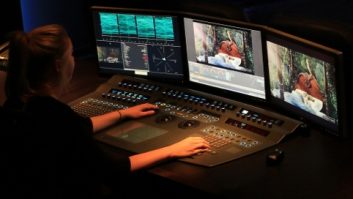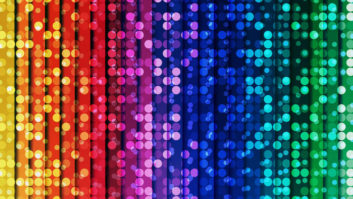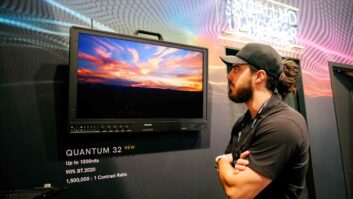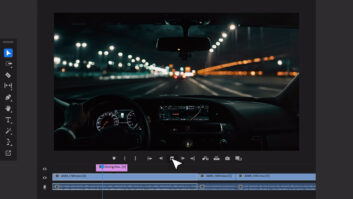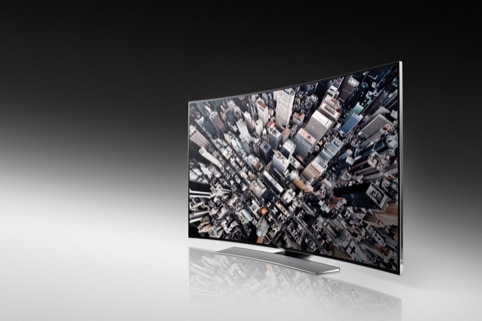
Enhanced UHD, wide curves, and a wearable experience – Adrian Pennington looks back at last month’s consumer tech tradeshow, CES.
Much of the recent debate surrounding Ultra HD has centred on the need for richer pixels, the argument being that consumers can’t see much difference in an HD versus 4K picture based on resolution alone. Add in greater colour range, higher speed and, crucially, higher brightness and you have a sufficiently compelling new viewing experience that may sustain interest longer than stereo 3D.
While the Rec. 2020 standard in the ITU’s UHD specs defines a variety of parameters including 10-12 bit depth, these have been largely sidelined in the distribution and display chain in favour of resolution.
At CES, several solutions emerged to enhance the base UHD spec from post to display with higher dynamic range to the fore. Dolby Vision retrieves all the extra information – details in shadow and highlights – already captured by high-end cameras like Red Epic and Sony F55 and makes it available to view. It has the backing of Netflix, Amazon Instant Video and Vudu. Broadcasters HBO and BSkyB are hinted to also show support.
Dolby showed side by side comparisons of Sony Pictures’ Oblivion on its own $40,000 PRM4200 reference grade monitor, and a prototype reference monitor showing the effect of Dolby Vision on the clips. Even though both models featured the same 2K panel, the Dolby Vision monitor had an increased backlight with about four times more LEDs (reaching 4000nits) and showed images visibly more luminant and crisper to the eye. Current UHD TVs have a brightness limited to just 100nits.
Technicolor is also pursuing HDR image enhancements and plans to propose its concept to MPEG in hopes of including it in the HEVC compression scheme for streaming 4K content. Like Dolby it is also developing HDR tools for grading and mastering.
Although the very latest UHD sets include the HEVC codecs necessary to display this enhanced 4K, there is a problem. Speaking on a panel I moderated at CES, Scott Mirer, director of partner services, Netflix asserted that consumers have been trained to see TV quality in terms of one number. But what the industry needs to do, Mirer said, is educate buyers on the benefits beyond resolution.
Even when HD images are presented in HDR the results are superior to current HD and arguably better than a resolution-only version at 4K. NAB will likely feature an array of post technologies designed to augment the 4K picture with greater luminance.
The latest crop of UHD TV’s share some interesting characteristics. By supporting HEVC, the models will enable OTT services from Netflix, M-Go, Sony and others to come on stream this year (Netflix switches on its 4K option this month). New flexible substrates have made curved panels possible. Both Samsung and LG showed screens which will move from flat to concave with the press of a button. Samsung’s used LED, LG’s was OLED.
Marketers claim that the curved field of view delivers an increased peripheral vision and thus a more cinematic experience. Several of the top of the range sets also came with a 21:9 aspect ratio, approximating CinemaScope, and offering even more of a movie theatre-style presentation for films.
Samsung unveiled the world’s largest curved-screen 21:9 UHD TV, measuring 105 inches (and selling for $70k), and Sony debuted a 4K laser projector that could turn your living room wall into a screen. The Sony unit can be placed inches from a bare wall and an image 147-inches diagonal is ‘thrown’ directly above it. At $50k, it’s not aimed at the mass market, unlike Polaroid’s and Vizio’s sub-$1000 screens.
Autostereo bubbles under the surface
The 2014 UHD TV series come with stereo 3D under the hood, but the real advances in 3D are being made by specialist autostereoscopic developers. Florida’s Izon said it would manufacture its own glasses-free screens by end of the year and Philadelphia’s Stream TV Networks has an ‘Intel Inside’ model, licencing its technology to Konka, Haier, Marvel Digital and – showing behind closed doors at CES – LG. These are 4K screens, some with Qualcomm’s Snapdragon processor inside, which will be priced between $1200 and $4000 which is midrange for 2D 4K panels. “Glasses free 3D will have no premium,” said Mathu Rajan, CEO of Stream TV Networks, “2014 is the breakthrough year for autostereo. We’ve spent a lot of capital over the last four years perfecting it.”
Given the current lack of 3D content, what will people watch on their glasses-free screens? Stream TV’s answer is to work with broadcasters and sports franchises to produce events optimised for its technology. The NBA, NFL, FIFA World Cup, BT Sport and BSkyB are targets for this ambitious company.
Dolby is the other main player in this space with its own production to screen autostereo pipeline. The Cameron Pace Group are capturing metadata for Dolby on the set of the Avatar sequels, which will be fed into future display of the films on autostereo displays.
Wearables to replace smartphones?
“The wearable market is set to explode,” declared Shawn DuBravac, chief economist, CEA. In part this is due to saturation of smartphones and tablets which provide the hub displays for connected services linked to health and fitness wrist-worn sensors. In part due to a revolution in MEMS (micro-electromechanical systems). These tiny sensors enable motion to be translated into digital information while miniature microphones improve speech recognition accuracy.
David Schie, CEO, Linear Dimensions Semiconductor suggested that smartphones will eventually disappear, their functions replaced by wearables. “Passwords don’t need to be typed if the devices are on your body,” he said. Battery life, computing power and form factors are other limiting factors.
“Now we are taking technology and putting it onto our body, we must ask how we can use the body as the interface for connecting to a larger network of things,” said Jennifer Darmour design director of fashion designer, Artefact.
Wearables “is a very nascent market, still looking for a killer app,” observed DuBravac. In terms of entertainment, smart glass has clear uses in sports training and also fan experience within stadia. Epson has its eye on that market, as does Sony which intends to take its Smart Eyeglass out of the labs and into sports grounds.
The CES demo of Smart featured video of a Confederations Cup match in which viewers wearing glass could see stats on players appear on holographic strips embedded in the lens. A second iteration of the product will feature a camera and the ability for users to share video, a function Sony is calling Social Live.
